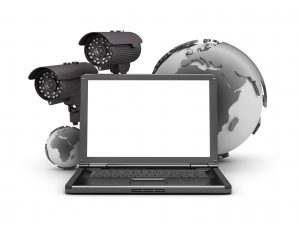Whether you like it or not, but if you have an account in Google – Google knows everything about you. In the literal sense – it knows how often you are breathing, where you can go and with whom you can meet, what you eat and drink. You don’t believe me? It’s true, but only partly. If you use the Android-smartphone, Google will even know something about that you have forgotten a long time ago. For example, what you used five years ago, or where were you last year, in the April 5.
So whose fault is that Google knows about people things, that they wouldn’t probably want to share with others? The answer is simple – a part of the information a person indicates in his profile, and search engine skillfully uses this data. Let’s start with the most annoying – with displaying advertisements, which you will surely notice with the right targeting.
Let’s suppose that you have indicated in your profile that you are a man. In this case, Google won’t bore you showing Cosmetics and offer something out of the category of goods, which most likely you are interested in: tools, cars or something else. If you specify additional information (such as your age) they, too, will take into account and ads will be more accurately hit the target.
Google Analytics Service is always on guard, and monitors which resources, when and how often you visit, what exactly you are interested in them.
However, in accordance with the law and taking into account the dissatisfaction of many users, Google provided an option to turn off shadowing. You can do it here.
But it’s just the beginning. Everything else is stored in the user’s personal account.
Let’s start with the account
Here you can find out what services have you used in the current month for Internet access, in which browsers and operating systems have you connected to your account, as well as what applications or services have requested access to your account.
But we shouldn’t hurry blaming Google in gathering too much information: this information is important primarily to the user. Because, thanks to it, you can exactly know whether somebody used your account or did the owner accidentally signed up on unnecessary service.
Here you can change your password, check the related applications and websites, prohibit their access to your account if you don’t trust this application or delete it from the device. Even if you don’t use the program, unscrupulous developers can force it to get data from your account or to act on your behalf. If you sold your gadget you should deny access for it to an account in Google. In addition, this action is necessary in case of loss of the smartphone and the inability to find it by standard means of remote control Android.
Section “Android”
Here you can see the list of devices on which you entered into your account.
If you click on the link “Management of active devices”, you will find out where your device is and what you should do if someone will stole it.
“Remote Control Android”
If you turn on the access to geodata service “Remote Control Android» on your device (see the section “Security” application “Settings Google»), and your phone is connected to a network – the service will help you to find its location, and you will be able to ring, lock or clean up your device from the personal data.
“Google Talk”
It’s well known Hangouts, service for exchanging messages. It displays the number of your contacts.
“Google Photos”
This section is dedicated to photographs. Here you can see how many albums you have, how many photos are in them, which photos are public and which are not.
“Settings”
Much more settings are stored in Google Plus on the link “Settings” (if you are using this social networking site).
For example, you can mark an item in order to download your photos into your account in full size or turn off auto-correction.
The following four sections in the information plan of little interest. Here you can adjust the profile Google+, find out how many applications you have downloaded, which devices and when you sync.
The next several points contain no important information, so we won’t dwell on them, and go straight to the location history.
In this tab, information about where and when you were during the last month is stored. Basically, you can ban Google to collect the data if you want.
“Search History”
Here are: the last search request and the most common kinds of requests, pictures, news, videos, or the addresses on the map.
“Calendar”
The section “Calendar” will be interesting for those who use this service for records of meetings and events. And the section “Maps” contains information about saved addresses.
Perhaps everybody knows everything about sections “Contacts” and “Mail” so is not necessary to stop at these points.
“Profile” and “Sync Chrome”
The last two points on our website – “Profile” and “Sync Chrome». The first section contains basic information about your profile: name, address and a link to edit. And the tab “Synchronization Chrome» contains information about the browser – how many passwords, tabs and extensions you’ve saved. You can also get from here to the synchronization settings.
If you are worried about the attention to your personality, and you want to delete your account – it’s quite likely that it will be necessary to download all of your data. Fortunately, the Google provides such an option – the data can be downloaded once, and in one place.













